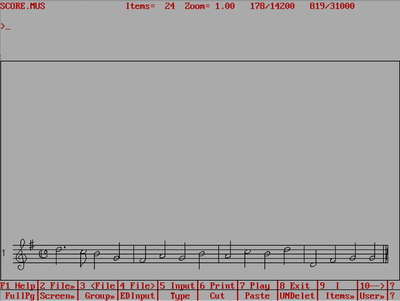SCORE survival guide
Inputting Music
Type the **INP** (or INPUT) command at the SCORE command prompt to start input mode in Score:
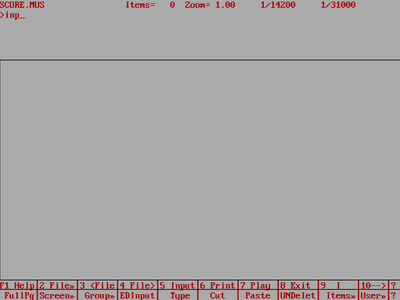
This will take you to the Input menu which are lists of parameters at the top of the screen. Use the Arrow keys to move between the parameters. Type numbers to change them. The meter and mode are not really useful to set. Mostly the size of the music, and the starting and stoping point for the staves are useful settings. An important one is the spacing parameter (but only when dealing with more that one voice/layer on a staff). Here is what the screen should look like after pressing "INP↵ Enter":
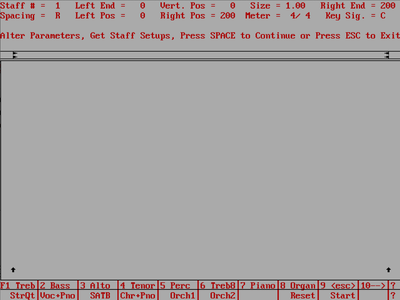
After the settings in the input menu are as desired, press the space bar to start typing the five-stage user input.
Here is a demonstration of the 5 stages for one of the basic melodic examples. First typing the pitch stage:
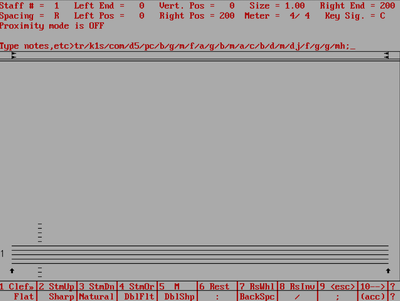
Then after pressing ↵ Enter, you will see pitches on the staff (in the Windows version the notes appear on the staff as you type them). Then you can type the rhythm stage:
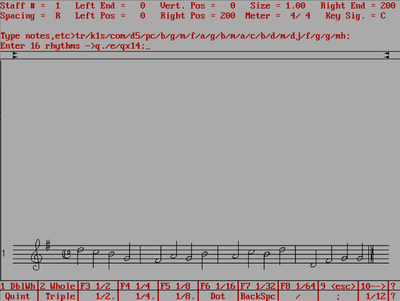
Note the information at the bottom of the screen. You can click on those boxes to insert rhythms, or press F4 to insert a quarter note for example. Notice that after you press ↵ Enter after the rhythm stage, the notes area assigned rhythmic values, and there are little (temporary) numbers shown above each note:
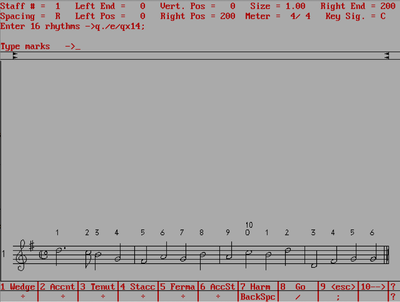
In this case there are no marks, beams or slurs to add to the music. You can type :+↵ Enter three times, or type g+↵ Enter to finish inputing the music:
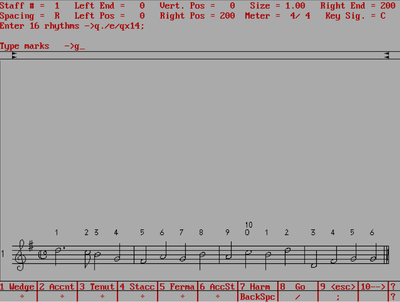
At this point SCORE asks if you want to save the data. It is asking if you want to save the text you just typed (ultimately not the graphical notation data that SCORE will generate from this text). You should type "Y" as a beginner and then view the data in a text editor to see what it looks like. This data can also be read into SCORE again with the RE command (helpful if you mess up the notation and don't want to enter by hand again):
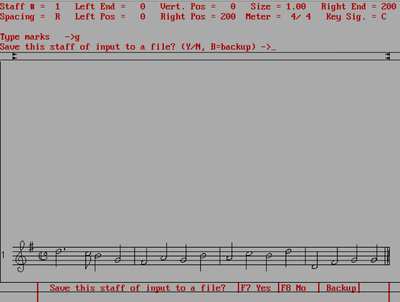
The data is text, so it is best to add the extension .txt to the filename. Also note that the filename base can only have 8 characters (this is MS-DOS):
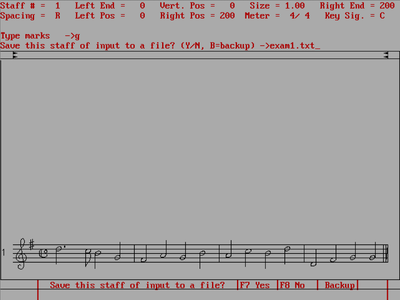
SCORE then starts to enter staff two (note that staff one is the bottom staff on the page). Press esc to exit input mode and return to command mode.
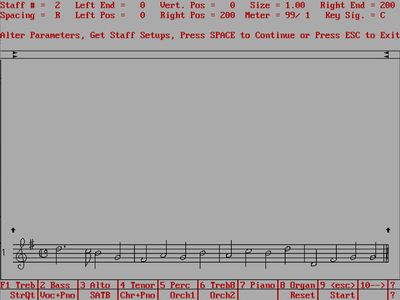
Saving Music
It is wise at this point to save the music (in its graphical form). Type "sa exam1 ↵ Enter" to save the current page to the hard disk. This will create the file "exam1.mus"
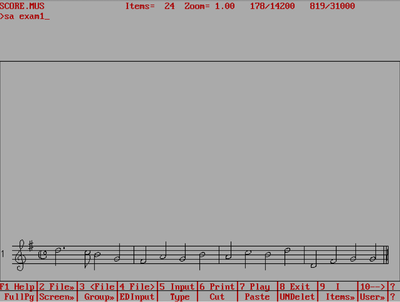
Notice that after you save the file, there is a message in the top left corner saying that the file is saved, and the top left corner lists the name of the file:
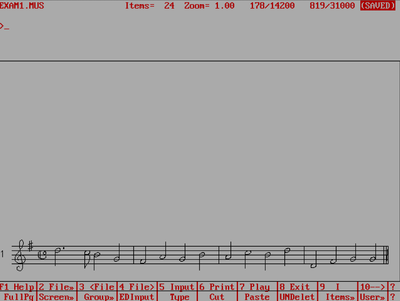
Clearing Music
Try typing "RS ↵ Enter" to clear the contents of the editor:
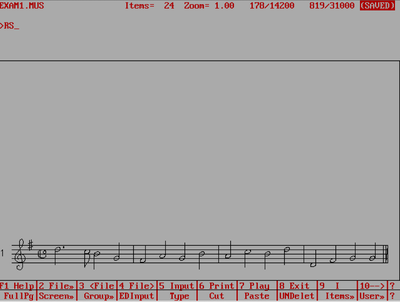
This will put the editor in the initial state:
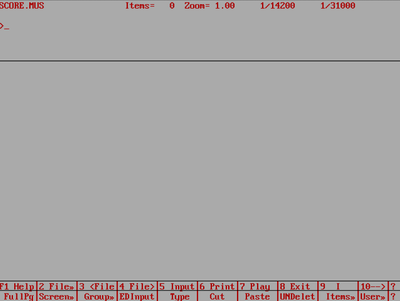
Load Music
You can load your music back into the editor with the "G" command (G = get). The default extension is .mus, so you do not have to type that part if you do not want to:
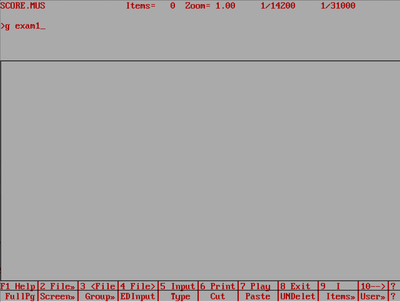
After getting the file, you should see your music back in the editor:
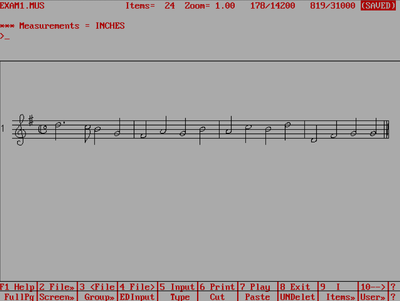
Alternatively, you can load the TEXT version that you created at the input mode stage. This is a form of SCORE macro which must be read with the RE command. Note the file extension is needed in this case since there is not default extension for macro files:
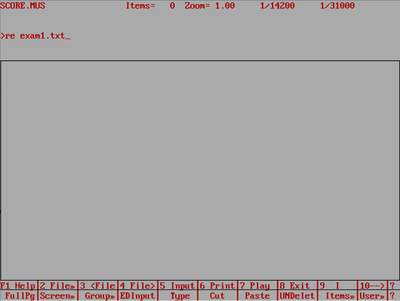
The read file will look the same as the binary exam1.mus file that was just loaded (because you have not done any further editing of the data after it was input). You can say Y to go back to input mode to alter the music, or press no to go back to command mode.
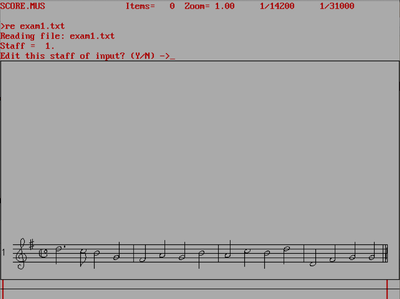
Here is what the contents of the editor look like if typing N:
